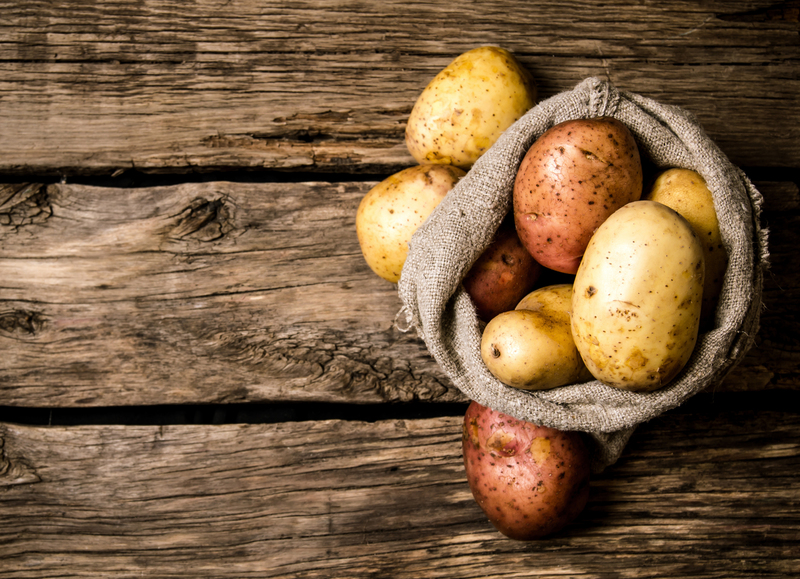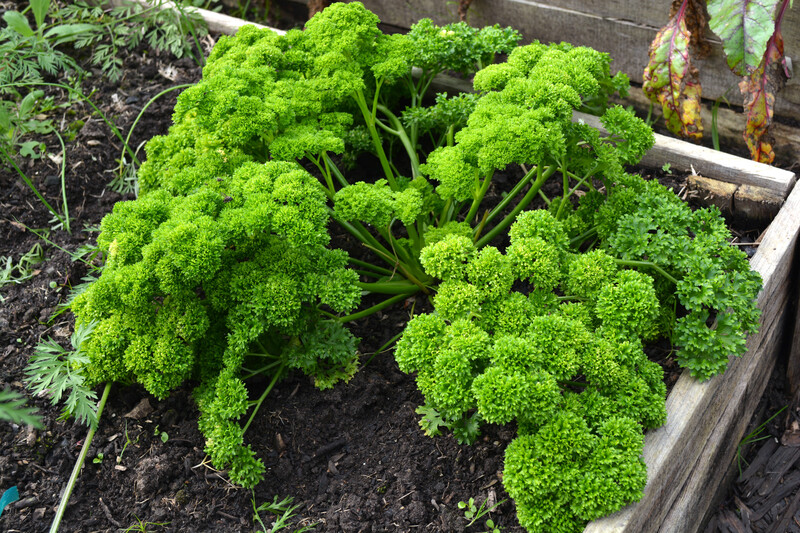Transforming Spaces: Developing Your Herb Garden
Posted on 25/09/2025
Transforming Spaces: Developing Your Herb Garden
Imagine stepping into your kitchen and plucking fresh basil for your pasta or snipping fragrant mint for your tea--all from your very own herb garden. Developing your herb garden isn't just about growing plants; it's about transforming your spaces, enhancing your well-being, and connecting with nature. Whether you have a sprawling backyard or a tiny apartment balcony, nurturing a herb garden is within your reach. Let's uncover how to turn any space into a lush, aromatic haven.
Why Start a Herb Garden?
Adding a herb garden to your home or outdoor area goes beyond merely beautifying the environment. Here are a few compelling reasons to start developing your herb garden today:
- Freshness On Demand: Enjoy homegrown herbs that deliver superior flavor and aroma compared to store-bought alternatives.
- Cost-Effective Culinary Power: Growing your own herbs saves money over time, reducing frequent trips to the store.
- Healthier Living: Home cultivation allows you to grow organic, pesticide-free herbs for your favorite recipes and teas.
- Sustainable and Eco-Friendly: Minimize your carbon footprint by reducing packaging waste and plant transportation miles.
- Decorative and Therapeutic: A well-developed herb garden adds greenery to your space and can improve air quality, mood, and relaxation.

Planning Your Herb Garden: Key Factors to Consider
Before you dive into designing your herb garden, taking a moment to plan can make the process smoother and more fruitful. Here's what you need to think about:
1. Choosing the Right Location
Herbs typically need at least 6 hours of sunlight per day. Observe your potential gardening sites--windowsills, balconies, patios, or backyard corners--and pick the sunniest spot. For shade-tolerant herbs (like mint or parsley), partial sunlight areas are also suitable. Indoor herb gardens thrive near south-facing windows or under grow lights if natural light is insufficient.
2. Determining the Garden Style
There's a perfect herb garden setup for every space. Consider these popular styles:
- Raised Beds - Great for outdoor spaces; easier access and better soil control.
- Container Gardens - Ideal for patios, balconies, or indoors; use pots, planters, or recycled containers.
- Vertical Gardens - Space-saving option using wall planters, hanging baskets, or pocket planters.
- Windowsill Herb Gardens - Compact solution for apartments or kitchens.
3. Selecting the Best Herbs to Grow
Choosing the right herbs is essential to a thriving herb garden. Start by considering:
- Your culinary preferences - Do you love Italian cuisine? Basil, oregano, and thyme are must-haves.
- Growing conditions - Rosemary prefers drier soil, while parsley enjoys moisture.
- Hardiness - Are you growing indoors or in a climate with frost? Chives, mint, and sage often thrive both indoors and outdoors.
Step-by-Step Guide: Developing Your Herb Garden
Ready to get your hands dirty? Here is a comprehensive guide to transforming your space with a lush herb garden:
Step 1: Gather Materials and Tools
- Quality potting soil - Choose a mix with good drainage and organic matter.
- Containers or garden beds - Make sure pots have drainage holes; raised beds require lining for weed control.
- Herb seeds or starter plants - Starter plants offer quick results; seeds are more economical.
- Watering can or spray bottle - For gentle, even watering.
- Label markers - Keep track of different herbs, especially when starting from seeds.
- Gloves and small hand tools - Protect your hands and make soil preparation easier.
Step 2: Prepare the Soil and Containers
- Fill your containers or beds with moist, loose potting mix enriched with compost.
- Ensure proper soil drainage to avoid root rot, a common issue with herbs.
Step 3: Planting Your Herbs
- Sow seeds at the recommended depth or transplant starter plants gently.
- Space plants according to their mature size; overcrowded herbs are prone to disease.
- Label each herb to distinguish varieties as they grow.
Step 4: Watering and Maintenance
- Water regularly but avoid overwatering--most herbs prefer soil that is slightly dry between watering.
- Prune regularly to encourage bushier growth and prevent flowering (bolting), which can alter flavor.
- Feed lightly with organic fertilizer or compost every few weeks during the growing season.
Step 5: Harvesting Your Herbs
- Harvest in the morning when essential oils are most concentrated for the best flavor.
- Cut stems above leaf nodes to allow quick regrowth.
- Use what you need fresh, and preserve the rest by drying or freezing for use throughout the year.
Creative Herb Garden Ideas for Every Space
No matter the size or shape of your space, there are countless ways to cultivate an inspiring herb garden at home. Check out these creative concepts:
1. Vertical Herb Wall
Transform blank walls or fences into a living herb tapestry using wall-mounted planters, mason jars, or hanging pockets. This maximizes vertical real estate and makes harvesting easy.
2. Pallet Herb Garden
Upcycle old pallets as multi-tiered plant holders. Simply fill the palette slots with soil and plant herbs in each row for a rustic, space-saving display.
3. Windowsill Collections
Group different pots of herbs on a sunny kitchen windowsill for an attractive, aromatic addition to your home. Terracotta, ceramic, or glass containers work well and bring style to small spaces.
4. Spiral Herb Bed
Create a raised spiral of stones or bricks in your garden bed. Plant water-loving herbs at the bottom and drought-tolerant varieties at the top, ensuring optimal conditions for all.
5. Herb Tower
Stack pots or use special herb tower planters to grow multiple herbs upward--perfect for balconies, patios, or even indoors to maximize yield while using minimal floor space.
6. Hanging Basket Herb Garden
Use traditional hanging baskets for fast-growing trailing herbs such as thyme, oregano, or peppermint. Suspend them from railings or pergolas to add lush greenery overhead.
Caring for Your Herb Garden: Tips for Success
Once you've established your home herb garden, ongoing care and observation will ensure success.
Watering Wisely
Overwatering is one of the most common reasons for herb garden failure. Stick your finger in the soil--if the top inch is dry, it's time to water. Avoid letting containers sit in pooled water.
Sunlight Optimization
Rotate containers regularly so all sides receive adequate light. During dreary winter months, supplement with fluorescent grow lights for continued productivity indoors.
Dealing with Pests Naturally
To keep your herb garden healthy and organic:
- Inspect plants weekly for aphids, spider mites, or mildew.
- Use a spray of mild soap and water for minor infestations.
- Encourage beneficial insects, like ladybugs, for natural pest control.
Harvesting & Pruning Regularly
The more you trim, the bushier your herbs will grow! Regular harvesting helps maintain herb vigor and prevents flowering, which can degrade flavors.
Year-Round Herb Gardening: Indoor Solutions
One of the greatest advantages of developing a herb garden is year-round accessibility. Don't let winter chill or summer heat deter you--bring your herbs inside!
- Use grow lights for basil, parsley, or cilantro during low-light months.
- Pot up outdoor herbs before first frost to continue growth indoors.
- Choose compact varieties and microgreens for countertop growing.
Maximizing Productivity: Advanced Tips for Herb Gardeners
Ready to elevate your herb garden from functional to exceptional? Try these expert strategies:
Companion Planting
- Grow basil with tomatoes for mutual pest resistance and enhanced flavor profiles.
- Pair chives and carrots to deter aphids naturally.
Soil Enrichment
- Mulch with shredded bark, straw, or compost to lock in moisture and regulate temperature.
- Use worm castings or homemade compost tea to boost soil microbiology.
Succession Planting
Sow new seeds every few weeks to ensure a continuous supply of fresh herbs year-round--especially for annuals like basil and cilantro.
Using and Preserving Your Homegrown Herbs
The joy of a well-developed herb garden comes full circle when you get to enjoy the harvest. Here's how to make the most of your bounty:
- Fresh Use: Snip right before using in salads, omelets, sauces, or infused oils.
- Drying: Hang bunches upside down in a cool, dark area or use a dehydrator. Store in airtight jars for future recipes.
- Freezing: Chop and freeze herbs in olive oil or water as ice cubes--perfect for cooking.
- Herbal Teas: Brew fresh or dried leaves of mint, lemon balm, or chamomile for relaxing beverages.
Transforming Small Spaces with Herbs: Balcony, Patio, and More
If you're short on space but big on ambition, herbs are the perfect solution for transforming small areas into productive green spaces. Choose compact containers, stackable planters, or wall-mounted designs. Use herbs as living decor on balconies, in entryways, or along kitchen shelves for both beauty and bounty.
Common Mistakes and How to Avoid Them
Even the most enthusiastic gardeners can stumble. Watch out for these herb gardening pitfalls:
- Overcrowding: Give each herb ample space for root and leaf development.
- Neglecting Light: If herbs look lanky or pale, they may need more sunlight or artificial grow lights.
- Neglecting Soil Quality: Poor, compacted or depleted soil stunts growth. Refresh potting mix annually and amend with compost.
- Overwatering: Ensure consistent but moderate watering schedule.
- Forgetting to Harvest: Regular snipping encourages lush new growth and robust plants.

Frequently Asked Questions About Developing a Herb Garden
- What are the easiest herbs to grow for beginners?
Basil, mint, parsley, chives, and oregano are among the top choices--they are forgiving and adaptable to different environments. - Can I grow herbs without a garden?
Absolutely! Herbs thrive in containers on windowsills, balconies, patios, and even under artificial lights indoors. - How often should I water my herbs?
Water when the top inch of soil feels dry; adjust frequency based on weather, humidity, and plant size. - Do herbs really purify air indoors?
Yes--herbs like rosemary, mint, and basil contribute to air purification and add pleasant scents to indoor environments.
Conclusion: Start Transforming Your Space Today
Developing a herb garden is more than just a hobby--it's a journey towards a greener, healthier, and more aromatic lifestyle. No matter your experience level or living situation, there's a way to incorporate herbs into your daily life. With careful planning, the right care, and a dash of creativity, you can transform your space into a vibrant sanctuary of fresh flavors and natural beauty. So, pick your favorite herbs, dig in, and savor the rewarding experience of growing your own herb garden!
Ready to embark on your herb gardening adventure? Transform your space, enrich your well-being, and enjoy a world of flavors at your fingertips--all starting with a single seed.

